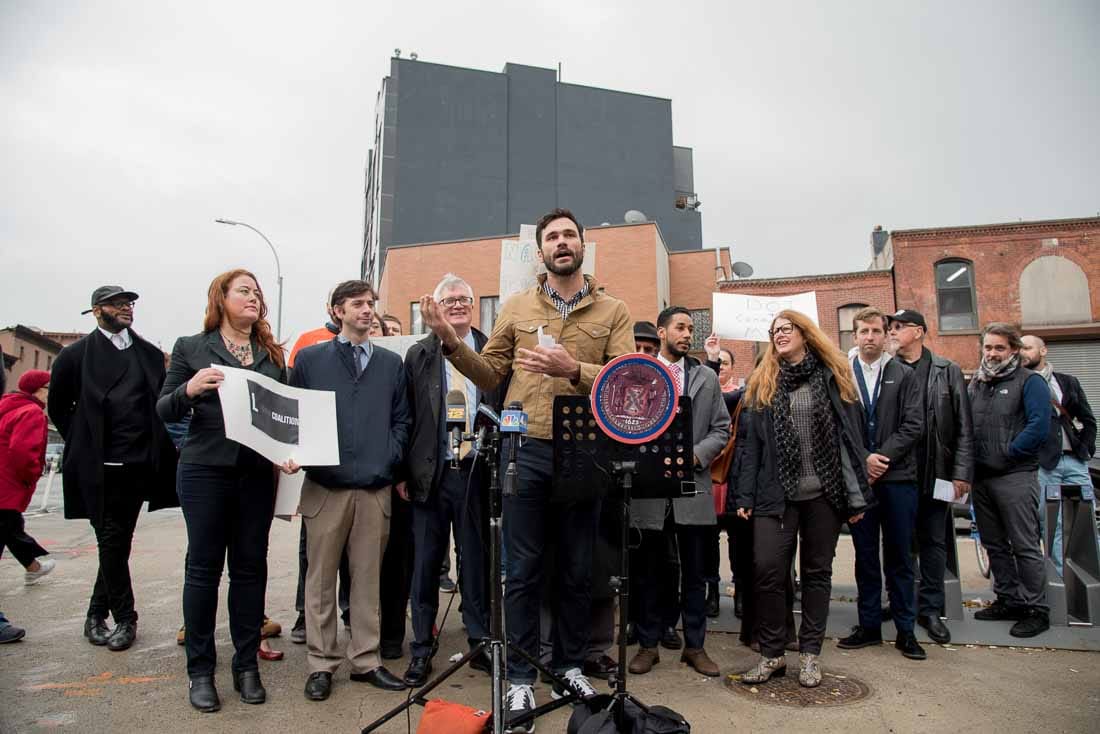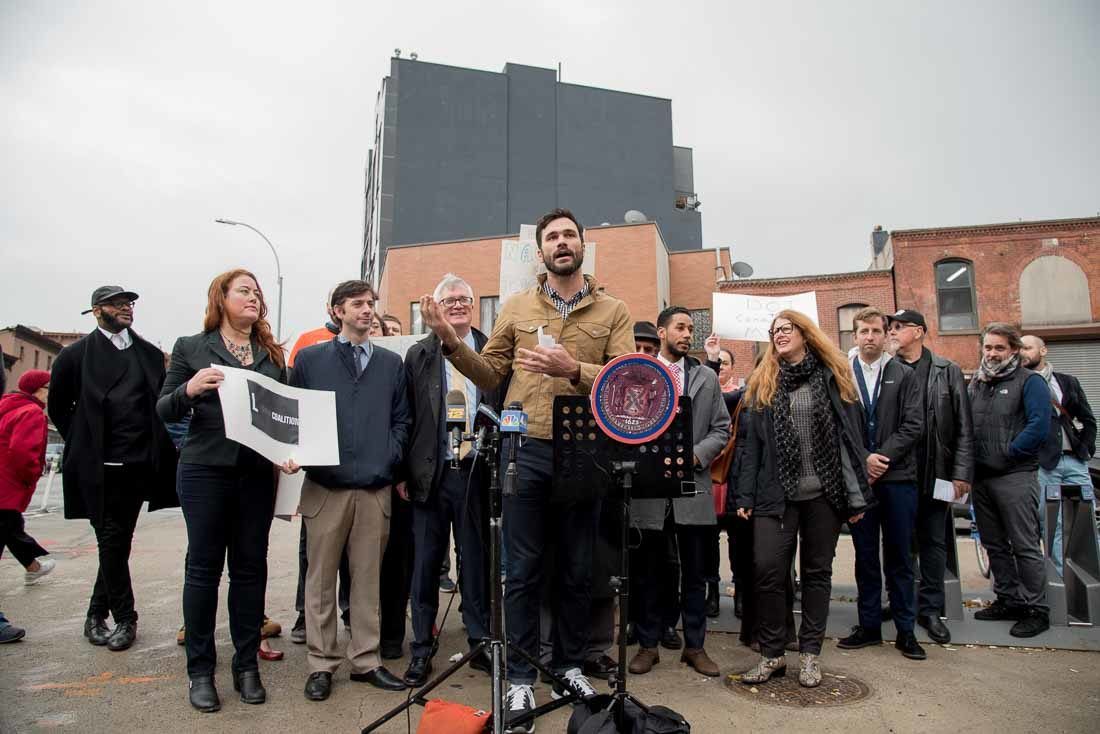Politicians Demand Information, Action from MTA and DOT Regarding L Train Closure


WILLIAMSBURG – Local politicians, business owners and representatives from neighborhood groups came together to demand action from the MTA and DOT in advance of the 15-month L train closure slated for April 2019.
Neither organization has made any public report on their plans to ease traffic congestion or protect local businesses, according to a statement from City Councilmember Stephen Levin’s office, and the community is calling on them to release reports for public comment.
The group also called for a commitment from the DOT, MTA, and contractors to meet with a community advisory board every month, starting in January 2018.
“There has to be a plan that’s collaborative and comprehensive,” said Councilmember Stephen Levin, predicting a political blame-game in 2019 between the Department of Transportation, a city agency, and the MTA, run by the state.
“Get it together, talk to one another, talk to the community,” Levin told the two organizations. “We don’t want to be saying in 2019, ‘We told you so.’”
The more than 220,000 commuters that use the L train to move between Brooklyn and Manhattan each day and will need to be absorbed by other means of transportation: shunted to the G train or moving across via the J/M lines.
Currently, the 4-car G train is packed to capacity, with commuters pushing their way onto already crowded trains at rush hour. City Councilmember Reynoso reported wait times for the J/M as well, calling the trains already overburdened—long before they’re expected to absorb more passengers.
The city has proposed a fleet of diesel busses to carry commuters across the Williamsburg Bridge, though neighborhood groups have balked at the environmental implications of diesel, demanding cleaner busses instead.
Even then, there’s still traffic to deal with. “There has to be a dedicated bus lane on the Williamsburg Bridge,” said Councilmember Levin. He also called for priority given to busses once they cross the bridge, with lanes planned to join them seamlessly with Manhattan’s traffic.
State Assemblymember Joe Lentol went further, suggesting the city explore increased ferry service, with subsidized transfers to the subway system. Lentol even floated the idea of a gondola spanning from Williamsburg to Manhattan, though the capacity of either system would be a small offset to the mass of L train riders who face soaring commute times.
“We need a great plan,” said Luke Ohlson, Senior Organizer at Transportation Alternatives, who said riders could see 30 to 45 minute increases in their commutes. Ohlson urged Mayor De Blasio to get involved, using the DOT to create space on the streets—even if the MTA’s actions were out of his purview.
Later, Ohlson took to Twitter to illustrate how long the wait has been for word from either organization:
175 days of radio silence from @NYC_DOT & @MTA to N. Brooklyn on #LTrainShutdown plans. First circled date is presentation at BK CB 1 on 6/8/2017. Second circled date is today. No meetings or presentations currently planned. Unacceptable. @vinbarone @danrivoli @dahvnyc @transalt pic.twitter.com/yNAhK8BwkU
— Luke Ohlson (@ohlukeson) December 5, 2017
“As the deadline gets nearer and nearer, details are limited to non-existent,” said Councilmember Antonio Reynoso, who called for more consistent messaging and engagement from the agencies. “Updates that are too far between are not acceptable.”
The DOT’s official statement on the matter states the organization is “working diligently” with the MTA to be ready for the shutdown and that “a plan is forthcoming.” The MTA did not respond immediately to BKLYNER’s request for comment.




